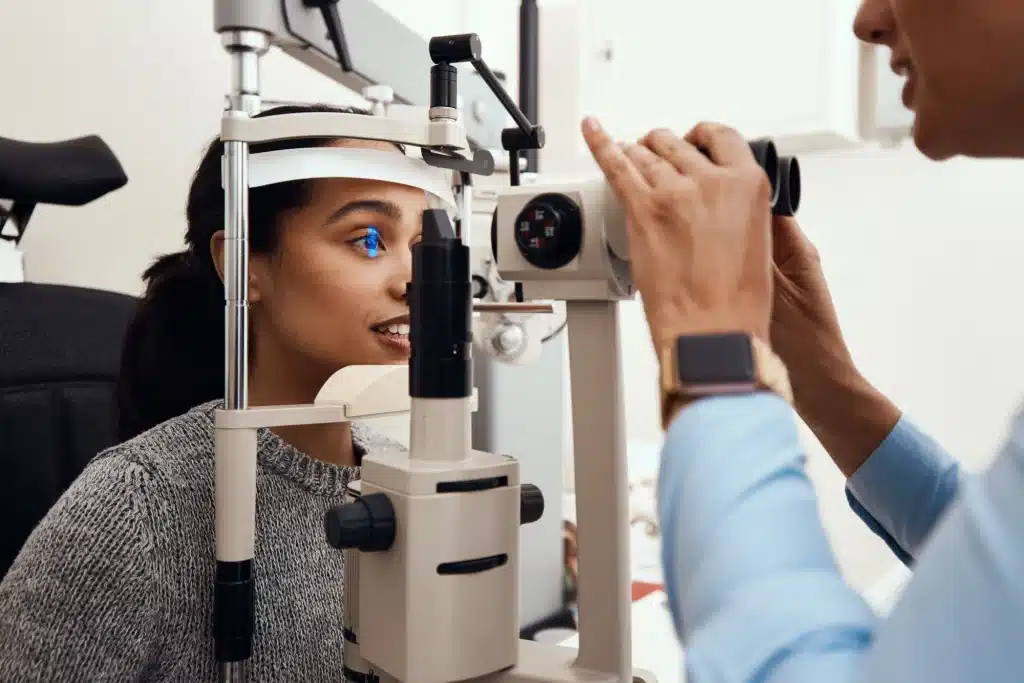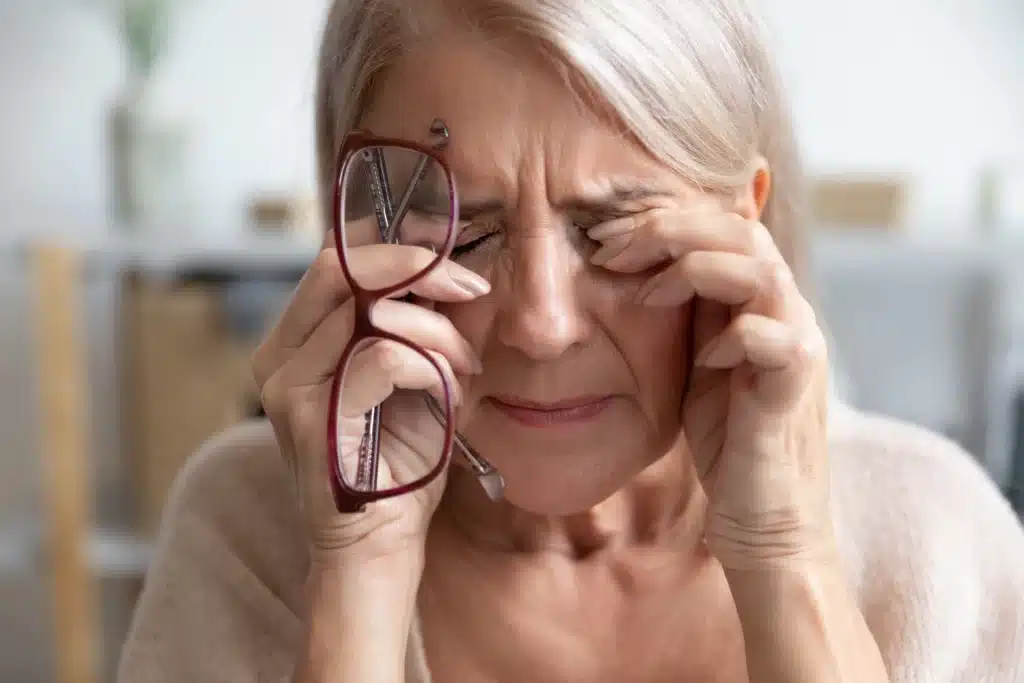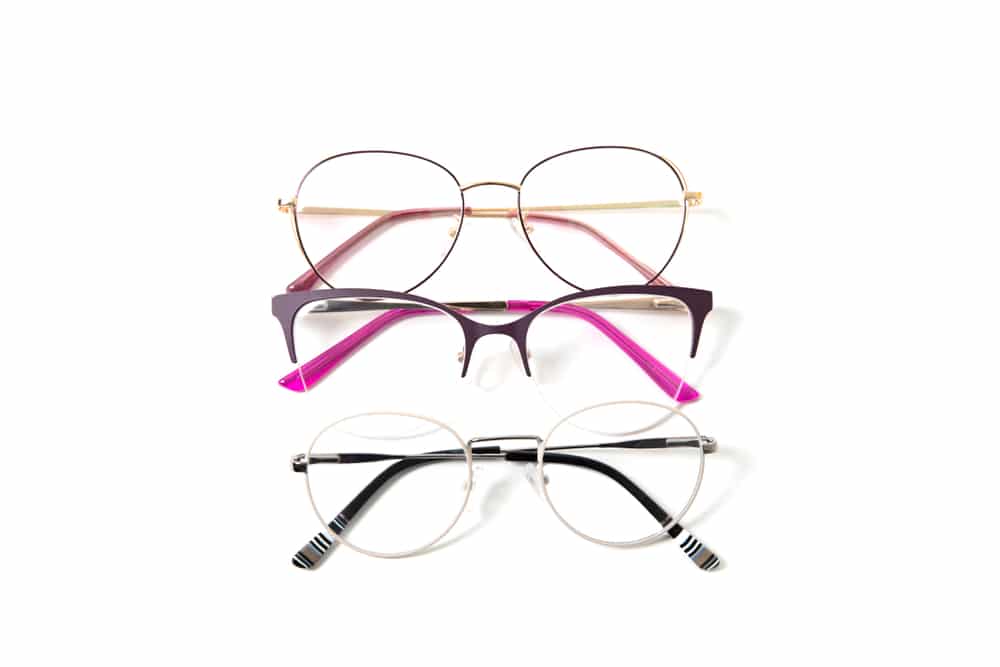Medically Reviewed by: Edward C. Wade, M.D., F.A.C.S.
April is National Women’s Eye Health and Safety Month
Prevent Blindness America designated April as National Women’s Eye Health and Safety Month. But why do we need a month dedicated to women’s eye health? Many people are surprised to discover that women make up the majority of cases of visual impairment and eye diseases around the world.
For example, according to a study performed by the National Eye Institute (NIH), women constitute 61% of glaucoma and cataract patients, 65% of age-related macular degeneration cases, and 66% of blind patients in North America.
Prevent Blindness America’s landmark study, The Future of Vision: Forecasting the Prevalence and Costs of Vision Problems, found similar results, stating that… “Women make up the majority of the 4.4 million Americans age 40 and older who are visually impaired or blind. More women than men have age-related macular degeneration, cataracts, and glaucoma.”
For more information on these common vision problems, visit the following articles:
- What is Macular Degeneration
- Understanding Dry Eye Syndrome
- Cataract Surgery in Houston
- Presbyopia Prevention
Fortunately, many of the eye health issues women face can be avoided, delayed, and managed by proactive prevention. That’s why Eye Center of Texas is joining the movement to help spread awareness of women’s eye health issues during National Women’s Eye Health and Safety Month. Discover the causes, risk factors, and prevention strategies for vision problems experienced by women.
Why are women more likely to experience vision problems and blindness?
There are several reasons why women are more likely to experience issues with eye health, some of which are sociological and some of which are biological. These are the top 3 reasons.
1. Women tend to live longer than men
On average, women in the United States live 5 years longer than men, with similar trends occurring across the globe. Because many vision problems and eye diseases are age-related, the fact that women live longer than men makes them more susceptible to experiencing degenerative vision loss via cataracts, diabetic retinopathy, macular degeneration, etc.
2. Many women around the world have limited access to quality healthcare
Women, especially elderly women, under- or uninsured women, women living in poverty, and single mothers all typically face reduced access to quality, affordable, and regular healthcare options. Since one of the best ways to reduce eye problems is early and regular testing, this issue also contributes to the prominence of eye diseases in women. Some have also argued that because women are the “caregivers” in the family, they are more likely to downplay their own health issues in order to focus on helping others.
3. Women have more eye health risk factors, and some diseases are simply more prevalent among women
Women experience dramatic major hormone changes during and after pregnancy and/or during and after menopause. These changes increase the susceptibility of many women to conditions such as dry eye syndrome, glaucoma, worsening refractive errors, retinal detachment, and diabetic retinopathy. Women are also at higher risk for having autoimmune diseases that affect vision, including Sjӧgren’s syndrome, lupus, hyperthyroidism, rheumatoid arthritis, and multiple sclerosis,
4. Ways to support women’s eye health and prevent vision loss
As mentioned previously, one of the best ways women can stay on top of their eye health during National Eye Health and Safety Month and beyond is to practice preventative tactics. These include but are not limited to:
- Starting at age 40, get a regular eye exam. For most folks, that means visiting the eye doctor at least when they turn 40 and then every two years after that. If you have an eye condition, you may need to see your eye doctor more frequently. Should you notice your vision deteriorating rapidly, that’s a sign you need to visit your ophthalmologist ASAP.
- Quit smoking. Smoking and second-hand smoke have been shown to be incredibly detrimental to eye health again and again, especially with regard to cataracts and age-related macular degeneration, and dry eyes.
- Know your family’s eye health history. Refraction errors, glaucoma, age-related macular degeneration, cataracts, lazy eye, and issues with color vision can all be passed down in the family. If you know that one or more of your family members struggles with eye health issues, tell your eye doctor.
- Eat a healthy diet. Nuts, citrus fruit, dark and leafy greens, and basically all other vegetables are good not just for your eyesight, but for your overall health. If, for whatever reason, you can’t work these into your diet, you can consider taking supplements. For more information, read our recent article on the best foods for eye health.
- Wear eye protection. Keep a pair of sunglasses that block sufficient UV rays by the door you use to leave your home, in your car, with your biking gear, and/or in your purse. Wide-brimmed hats can also help limit sun exposure to your face and eyes.
- Practice good makeup hygiene. Wash your hands before applying and removing makeup, remove your eye makeup every night before sleep, keep your applicators clean, and do not share your eye makeup with others. If possible, avoid using lotions with strong chemicals around your eyes, including retinol creams.
- Practice good contact lens hygiene. Keep your contact prescription up to date and do not leave your contact lenses in longer than is recommended. Should your contact lenses come into contact with water, replace them as soon as possible; doing so can help prevent acanthamoeba keratitis, an eye disease caused by the amoeba Acanthamoeba that lives in water. Do not swap your contact lenses with others, and avoid wearing cosmetic contact lenses, especially if they are being sold without a prescription by a non-professional.
- Get your eyes checked directly before, during, and after pregnancy. Many hormone changes that can affect eye health occur during pregnancy. Women who have diabetes are especially encouraged to have their vision checked regularly during this time.
- Support organizations and initiatives such as the Schepen Eye Institute’s and NHI’s Women’s Eye Health.org (http://www.w-e-h.org/) which help to spread awareness regarding this topic.
Eye Center of Texas Supports Women’s Eye Health
Eye Center of Texas is proud to help the women of Houston and the greater Houston area to maintain their eye health, restore their vision, and continue to see their way clearly in life.
While we are most well-known for providing from some of the best LASIK in Houston our nationally-recognized team has helped thousands of women recover from and manage eye health issues and diseases such as glaucoma, cataracts, macular degeneration, and more.
From preventative care to advanced treatment options, Eye Center of Texas is here for you and your eye health needs. Put your vision in the hands of some of Houston’s most trusted ophthalmologists. Request a free LASIK consultation at 713-395-1515, a regular appointment at 713-797-1010, or contact us online today.
Additional Helpful Articles by Eye Center of Texas
Related Articles
Financing Options Available
Apply today to find a financing option that meets your needs.
Our Locations
Houston/Bellaire
6565 W. Loop S., Suite 650Bellaire, TX 77401
Medical Office:
713-797-1010
Medical Fax:
713-357-7276
LASIK/Near Vision:
Office: 713-395-1515
Fax: 713-357-7278
Pasadena
4415 Crenshaw RoadPasadena, TX 77504
Medical Office:
281-977-8800
Medical Fax:
281-977-8877
Sugar Land
15200 S.W. Freeway, Suite 130Sugar Land, TX 77478
Medical Office:
281-277-1010
Medical Fax:
281-277-4504
Clear Lake
455 E. Medical Center Blvd., Suite 110Webster, TX 77598
Medical Office:
281-332-1397
Medical Fax:
281-282-9152
Katy
Greenhouse Medical Plaza2051 Greenhouse Road, Suite 110
Houston, TX 77084
Medical Office:
346-547-7070
Medical Fax:
281-214-2971
The Woodlands/Conroe
100 Medical Center Blvd., Suite 118Conroe, TX 77304
Medical Office:
936-647-1610
Medical Fax:
936-647-1620


